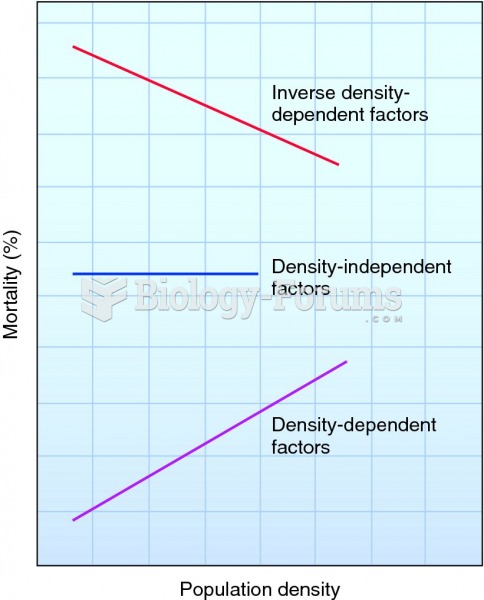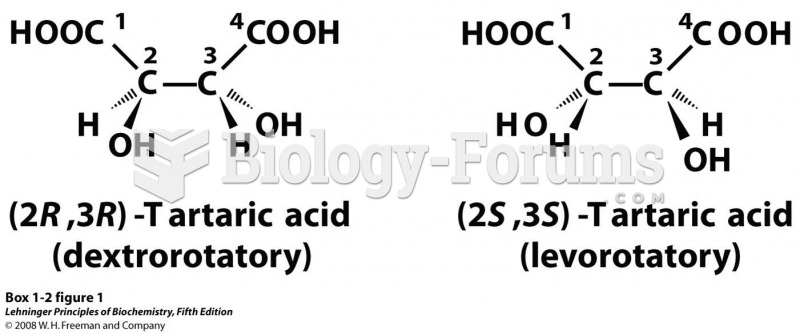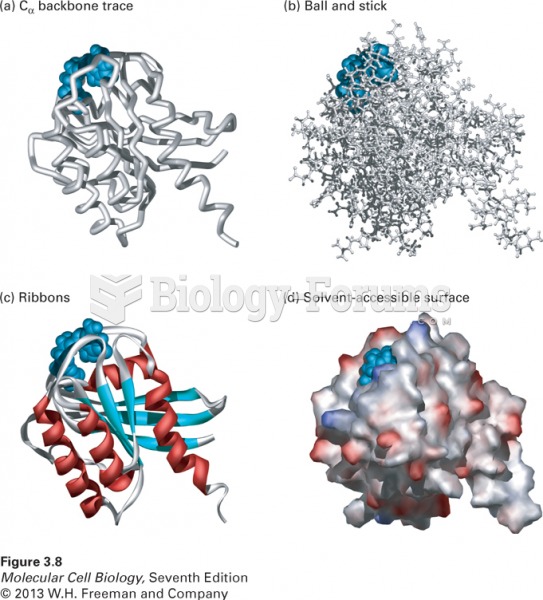Answer to Question 1
ANSWER: Spontaneous or homogeneous freezing is the freezing of pure water (without the benefit of some nucleus). For this type of freezing to occur, enough molecules within the water droplet must join together in a rigid pattern to form a tiny ice structure, or ice embryo. When the ice embryo grows to a critical size, it acts as a nucleus. Other molecules in the droplet then attach themselves to the nucleus of ice and the water droplet freezes. Tiny ice embryos form in water at temperatures just below freezing, but at these temperatures thermal agitations are large enough to weaken their structure. The ice embryos simply form and then break apart. At lower temperatures, thermal motion is reduced, making it easier for bigger ice embryos to form. Hence, freezing is more likely. The chances of an ice embryo growing large enough to freeze water before the embryo is broken up by thermal agitation increases with larger volumes of water. Consequently, only larger cloud droplets will freeze by homogeneous freezing at air temperatures higher than -40 degrees Celsius. In air colder than -40 degrees Celsius, however, it is almost certain that an ice embryo will grow to critical size in even the smallest cloud droplet. Thus, any cloud that forms in extremely cold air (below -40 degrees Celsius), such as cirrus clouds, will almost certainly be composed of ice, since any cloud droplets that form will freeze spontaneously.
Contact freezing is the process in which contact nuclei cause supercooled droplets to freeze if they collide with them. Contact freezing may be the dominant force in the production of ice crystals in some clouds.
Accretion is the process of ice crystals growing larger as they collide with supercooled cloud droplets. Upon contact, the liquid droplets freeze into ice and stick together. It occurs in especially those clouds with relatively warm tops.
Answer to Question 2
ANSWER: Every radar unit consists of a transmitter that sends out short, powerful microwave pulses. When this energy encounters a target a fraction of the energy is scattered back toward the transmitter and is detected by a receiver. The returning signal is amplified and displayed on a screen, producing an image, or echo, from the target. The elapsed time between transmission and reception indicates the target's distance.
The Doppler radar is like a conventional radar in that it can detect areas of precipitation and measure rainfall intensity. Using special computer programs called algorithms, the rainfall intensity, over a given area for a given time, can be computed and displayed as an estimate of total rainfall over that particular area. Furthermore, the Doppler radar uses the principle called Doppler shift, which is why it has the capacity to measure the speed at which falling rain is moving horizontally toward or away from the radar antenna. Falling rain moves with the wind. Consequently, Doppler radar allows scientists to peer into a tornado-generating thunderstorm and observe its wind.






